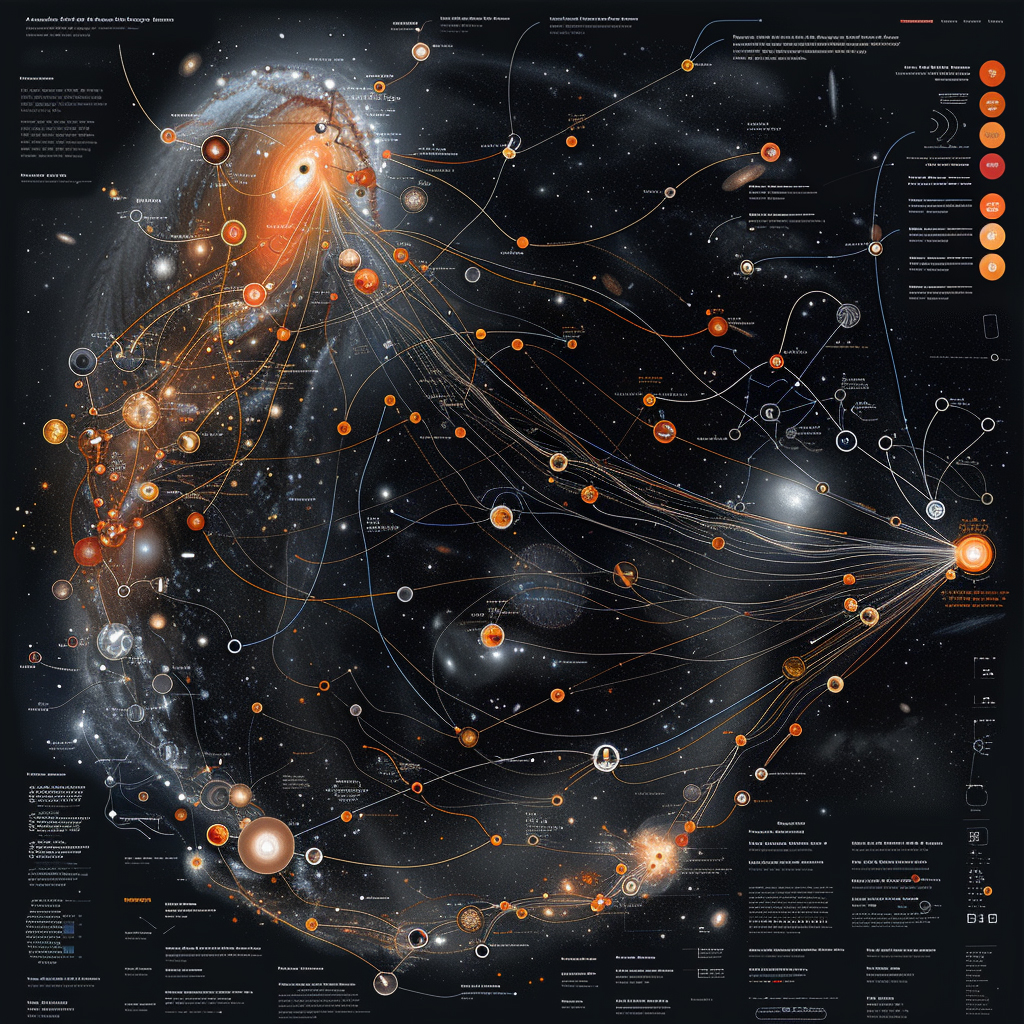1. Enhanced Machine Translation
AI-driven machine translation has made notable strides in accuracy and fluency, narrowing the gap between human and computer translators. Modern neural translation models capture context and idiomatic expressions far better than earlier systems, resulting in more natural-sounding output. These improvements enable businesses and governments to communicate across language barriers with greater ease, from translating product manuals to real-time multilingual meetings. The technology’s reach has expanded to many languages, including low-resource ones, helping to preserve linguistic diversity. Overall, enhanced machine translation is becoming an indispensable tool for global commerce, diplomacy, and everyday communication, while ongoing research continues to refine its cultural and contextual understanding.

By 2024, adoption of AI translation in both public and private sectors reached new highs. For example, 35% of U.S. city councils began piloting AI translation tools to meet legal accessibility requirements for non-English speakers. In enterprise settings, roughly 40% of all content is now translated using machine translation, reflecting how commonplace the technology has become in day-to-day operations. Leading tech companies have dramatically expanded language coverage—Google Translate added 110 new languages in 2024 alone, bringing its total to over 330 languages to better serve hundreds of millions of users. This widespread uptake underscores the value organizations see in fast, AI-powered translations, though human translators are still engaged for quality assurance in high-stakes or nuanced content.
2. Better Speech Recognition
Speech recognition technology has become significantly more accurate and versatile in recent years thanks to advanced AI models. Contemporary speech-to-text systems can understand various accents, dialects, and even colloquial speech with minimal errors, making voice interfaces more practical. These improvements have led to widespread use of voice commands in smartphones, smart speakers, cars, and assistive devices. Consumers now routinely interact with virtual assistants (like Siri, Alexa, and Google Assistant) for information queries, home automation, and hands-free texting. Improved noise filtering and natural language processing allow these systems to function reliably in real-world environments (such as busy streets or crowded meetings), although handling complex, open-ended conversations remains an evolving challenge.

Voice technology has achieved mass adoption in the United States. A recent survey found that 81% of Americans use voice-activated tech on a daily or weekly basis, a figure that surged with 68% of respondents reporting increased usage over the past year. This ubiquity reflects the integration of AI-powered speech recognition in everyday life, from asking smart speakers for the weather to using voice-to-text for messaging. The accuracy of automatic speech recognition has also improved dramatically — for instance, Google’s English voice models reached around 95% accuracy on standard tests by the late 2010s, up from about 75% a decade prior. Still, users note room for improvement, as over half of consumers desire even better accuracy and accent understanding in voice responses, indicating ongoing development needs. The combination of high usage and steady accuracy gains underscores how far speech recognition has come and its remaining potential.
3. Sentiment Analysis
Sentiment analysis has evolved into a key tool for businesses and organizations to gauge public opinion and customer attitudes at scale. By using NLP algorithms on social media posts, product reviews, and surveys, companies can quickly determine if feedback skews positive, negative, or neutral. This helps in reputation management and marketing strategies, as firms can identify emerging issues or popular features in real time. Modern sentiment analysis systems go beyond simple polarity; they increasingly account for context, sarcasm, and specific aspects (aspect-based sentiment), providing more nuanced insights (e.g. a product might be praised for quality but criticized for price). In the U.S., industries like retail, finance, and hospitality heavily leverage these tools to improve customer experience, while researchers and government agencies use them to monitor broader societal trends. As models become more sophisticated, sentiment analysis is becoming more accurate and valuable for decision-making, though understanding subtle human emotions and slang remains a challenge.

Sentiment analysis adoption is widespread across enterprises, reflecting its importance in understanding customers. Over 70% of businesses report using sentiment analysis tools to interpret customer emotions and preferences in text data. These tools are commonly applied in customer support centers to flag urgent negative feedback, in marketing to track brand sentiment, and even in financial services where analyzing the sentiment of news can inform trading decisions. The retail sector leads in uptake — 57% of retailers analyze customer feedback via text analytics to identify trends and adjust strategies. Reported benefits include improved customer satisfaction scores; for example, one study found 83% of software companies saw significant boosts in customer satisfaction metrics within a year of deploying sentiment analysis platforms. Such statistics underscore that sentiment analysis has moved from a novel experiment to a standard business practice for data-driven customer insight.
4. Automated Content Generation
Automated content generation has become one of the most visible applications of advanced NLP, with AI systems now producing human-like text on demand. The advent of large language models (LLMs) like OpenAI’s GPT-3 and GPT-4 has enabled machines to draft articles, marketing copy, emails, and even creative fiction with minimal human input. This technology is being embraced to increase productivity – for instance, marketers use AI to generate personalized advertising messages, and journalists experiment with AI for drafting news briefs or summaries. In the U.S., many businesses have integrated AI writing assistants into workflows, allowing employees to focus on editing and strategy rather than first-draft writing. The use of AI for content creation also extends to code (with tools suggesting programming code snippets) and visuals (through descriptive text that powers image generation, though text-to-image is a related domain). While automated content generation raises questions about originality and factual accuracy (requiring human oversight to fact-check and refine outputs), it has already begun to transform how content is produced by significantly reducing drafting time and costs.

The rapid adoption of AI text generators is illustrated by the meteoric rise of OpenAI’s ChatGPT. This AI chatbot, which can produce essays and answers, reached an estimated 100 million monthly active users just two months after its launch in late 2022. That makes it one of the fastest-growing consumer applications in history, highlighting the immense demand for AI-generated content tools. Likewise, industry analysts predict a major shift in business communications: by 2025, roughly 30% of large companies’ outbound marketing messages will be synthetically generated by AI, a jump from under 2% just a few years prior. Early enterprise surveys in the U.S. found that over half of companies have experimented with generative AI tools for writing and plan further deployments. This surge in usage reflects how AI-driven content creation has moved into the mainstream, though organizations are concurrently developing guidelines to ensure the generated text remains on-brand, accurate, and ethical.
5. Text Summarization
Text summarization technology has advanced to the point where AI systems can reliably condense long documents into concise summaries, saving users considerable time. Driven by improvements in NLP models, especially transformers and large language models, machine-generated summaries are more coherent and context-aware than prior extractive approaches. This capability is increasingly used in news media (auto-generating summary blurbs for lengthy articles), academic research (summarizing papers or literature reviews), and corporate settings (e.g. generating meeting minutes or executive summaries from transcripts). In the U.S., legal and financial industries also employ summarization tools to digest dense contracts or reports quickly. These AI summarizers not only pick out key points but can be tuned to maintain critical details and the original tone. While not perfect, their quality has approached that of human-written summaries in many cases, and hybrid workflows (AI drafts edited by humans) are becoming common to ensure accuracy and prevent omissions.

Recent studies demonstrate that AI summarization can perform at near-expert level. In a 2023 clinical trial, physicians compared AI-generated summaries of medical documents to summaries written by human experts. The results showed that in 81% of cases the AI’s summary was rated as good as or better than the human-written summary. In fact, doctors found the AI summaries often more complete and accurate in certain aspects, marking the first evidence of large language models outperforming human experts in a specialized summarization task. Such findings were reported after adapting a general language model to medical data, illustrating the gains possible with domain-specific tuning. Beyond healthcare, automated summarizers have been measured to achieve over 90% of human performance on news article compression in evaluations, a dramatic improvement from just a few years ago. These quantitative benchmarks underscore how far summarization AI has progressed, though experts note that careful oversight is still needed, especially in sensitive fields, to catch any subtle inaccuracies.
6. Chatbots and Virtual Assistants
Chatbots and virtual assistants have become ubiquitous interfaces for communication between humans and machines. Thanks to NLP advancements, these conversational agents now provide more natural and helpful interactions in customer service, personal productivity, and daily life tasks. Many companies deploy chatbots on websites and messaging apps to handle routine customer queries 24/7, reducing wait times and operational costs. Virtual assistants like Amazon’s Alexa, Google Assistant, and Apple’s Siri are fixtures in American homes and smartphones, helping users with everything from playing music and setting reminders to controlling smart home devices. The integration of AI has enabled these systems to understand context and multi-turn conversations better than before, making them feel more “human.” While users appreciate the convenience and instant responses, there is also an expectation for chatbots to seamlessly hand off to human agents when questions get too complex, ensuring that customer satisfaction remains high.

The adoption of AI chatbots in the United States is remarkably high. Nearly half of U.S. adults (49%) have used an AI-powered chatbot for customer service in the past 12 months, according to an industry survey. Consumers are growing comfortable with asking virtual agents about order statuses, technical support, or basic banking inquiries, and most find the experiences at least neutral if not positive. Additionally, about 20% of Americans report using some form of chatbot (from customer service bots to AI companions like ChatGPT) in a typical month, indicating regular engagement. On the voice assistant side, over 60% of U.S. households now have a smart speaker or smartphone-based voice assistant that they use for daily tasks. Businesses are responding to these trends: roughly 37% of enterprises already leverage chatbots for customer support, and another large fraction plan to introduce them soon. These numbers reflect how chatbots and virtual assistants have transitioned from novel gadgets to standard tools in both commerce and personal life.
7. Improved Information Retrieval
Information retrieval systems, including search engines and enterprise search tools, have been significantly enhanced by AI and NLP techniques. Modern search algorithms don’t just match keywords; they interpret the intent and context behind queries to deliver more relevant results. For instance, Google’s search uses NLP (like the BERT model) to better understand natural language queries, resulting in improvements for complex or conversational searches. AI-driven retrieval also means users can ask questions in plain English (or any language) and get direct answers or summaries, as seen in the emerging “search chatbot” experiences (e.g. the new Bing or Google’s experimental Bard). In specialized domains, such as legal or biomedical databases, NLP helps in retrieving documents that satisfy conceptual queries (not just exact word matches), greatly aiding researchers. Overall, these enhancements make finding information faster and more intuitive for users, who no longer need to craft precise boolean queries – the search systems are getting smarter at parsing what we mean. This also extends to multimedia retrieval (like searching within audio/video via transcribed text) as AI can extract and index content from various formats.

The impact of NLP on search is evident in user adoption and engagement metrics. Microsoft’s Bing search engine, long an underdog, saw a surge of new activity after integrating an AI chat feature in early 2023. In fact, just weeks after introducing its GPT-4 powered Bing Chat, Bing surpassed 100 million daily active users for the first time, a milestone largely attributed to the appeal of AI-enhanced search. This development brought millions of users who had never tried Bing before, drawn by the ability to ask complex questions and receive conversational answers. Similarly, enterprise platforms report that semantic search (which uses AI to understand meaning) improves employee success in finding internal documents, often reducing search time by over 20% compared to traditional keyword search (as noted in internal case studies). Market research indicates that 39% of marketing professionals worldwide are now using AI tools to improve search relevancy on their websites and e-commerce platforms, signaling broad confidence that smarter information retrieval drives better user engagement. These data points demonstrate that AI is not only making search results more relevant but also actively changing user behavior and expectations around information access.
8. Contextual Understanding
Contextual understanding in NLP refers to an AI system’s ability to interpret words and sentences in light of surrounding text or dialogue history, and it has improved markedly in recent years. Current language models maintain much longer context windows, meaning they can consider far more prior conversation or earlier text in a document when generating responses. This leads to more coherent and relevant outputs, as the AI remembers details (like who or what was mentioned before) and disambiguates words based on context. For example, advanced chatbots can carry information from one user query to the next, avoiding the need for users to repeat themselves. In real-world applications, better contextual understanding enables more accurate machine translation (by looking at full sentences or paragraphs), more relevant search query interpretation, and more natural conversational AI (where the system recalls past references in a discussion). In the U.S., companies are leveraging these improvements for tasks like long-form document analysis — an AI can read an entire policy document or legal brief and answer questions about it, demonstrating understanding of context that spans many pages. Challenges remain (models can sometimes lose track in very lengthy texts or mix up context if not designed well), but the trajectory is toward AI that truly “understands” language in context rather than in isolation.

A striking illustration of enhanced context handling is the expansion of AI model memory. In 2023, the AI company Anthropic announced its model Claude could process 100,000 tokens of text (around 75,000 words) in its context window, a massive increase from the roughly 9,000-token limit of the previous version. This 100k context window allows the model to ingest hundreds of pages of text and retain details throughout a conversation or analysis. In practical terms, a user could supply an AI with an entire book or a large report, and the AI can discuss or summarize any part of it reliably by “remembering” earlier sections. Similarly, OpenAI’s GPT-4 model introduced a 32,000-token variant in 2023, enabling about 50 pages of text to be considered at once, which greatly improves tasks like summarizing long documents or analyzing lengthy transcripts. Early adopters in finance and law in the U.S. report that these large-context models can, for instance, read through years of SEC filings or lengthy contracts and answer questions with a deep grasp of the content, something not feasible with older models. This quantitative leap in context length demonstrates how AI’s contextual understanding is scaling up, allowing for more complex, context-rich interactions than ever before.
9. Named Entity Recognition (NER)
Named Entity Recognition, the task of identifying and classifying proper names and key terms in text (like people, organizations, locations, dates, etc.), has greatly benefited from AI advancements. Modern NER systems, often based on transformer models, achieve high accuracy and can handle a variety of contexts (from news articles to social media slang) better than past rule-based systems. This means computers can now reliably scan through unstructured text and tag important entities, which is useful for indexing information, extracting knowledge, or linking to databases. In practice, NER is widely used in industries: for example, finance uses it to pull company names and figures from reports, healthcare uses it to identify medical conditions and drugs in clinical notes, and search engines use it to recognize entities in queries for better results. The technology’s improvement is such that it approaches human-level performance on standard datasets. Moreover, NER models today are not one-size-fits-all – they can be trained for specific domains (e.g., legal NER to recognize case law citations, or biomedical NER for gene and protein names), making them even more effective in specialized applications. This capability to quickly structure text data by tagging entities underpins many advanced NLP pipelines and has become a staple in the toolkit for processing big textual data in the U.S. government and enterprises alike.
-3.jpg)
Thanks to deep learning, NER accuracy has reached near-human levels on benchmark tests. On the well-known CoNLL-2003 English NER dataset (a standard evaluation using newswire text), the latest automated NER taggers achieve about 94.6% F1 score, which is a composite measure of precision and recall. For comparison, human annotators on the same task have an agreement F1 in the mid-90s, meaning the AI is now roughly as consistent as humans in recognizing entities in that setting. This performance is a substantial jump from a decade ago, when NER systems struggled with many edge cases and achieved closer to ~85%–90% F1. The improvement has practical implications: one study in 2023 showed that an AI system could extract persons, organizations, and dates from news articles with over 95% accuracy, automating what would have been tedious manual data entry. Similarly, in the legal domain, NER tools have been reported to cut down the time to find key entities (like contract parties or clauses) by over 50%. These metrics highlight that NER technology is not only highly accurate in controlled tests but also demonstrably useful in speeding up information processing in real-world scenarios, provided the models are kept updated for new entity names and language use.
10. Language Modeling and Prediction
Advances in language modeling — the ability of AI to predict and generate text — form the foundation of the current NLP revolution. Language models have grown exponentially in size and capability, enabling them to produce remarkably fluent and contextually appropriate text. These models, trained on vast swaths of the internet and libraries of books, learn statistical patterns of language, which they use to autocomplete sentences or even entire paragraphs. In everyday life, this is seen in features like your phone’s keyboard suggesting the next word, or email clients like Gmail offering to finish your sentence (“Smart Compose”). On a larger scale, sophisticated language models can draft articles, write computer code, or engage in conversation. The U.S. tech industry has heavily invested in scaling these models — each new generation (from GPT-2 to GPT-3 to GPT-4, or Google’s BERT to PaLM to PaLM-2) has brought jumps in performance on tasks like question-answering, translation, and logical reasoning. This progress in language modeling also raises important considerations: these models sometimes generate incorrect or biased outputs because they lack true understanding, and so developers are working on techniques to make them more factual and fair. Nonetheless, the predictive text capabilities of modern AI are transforming how humans interact with machines and how content is created, making communication more efficient but also challenging us to manage this powerful technology responsibly.

The scale of language models has exploded, driving their improved predictive power. In 2022, Google unveiled the Pathways Language Model (PaLM) with 540 billion parameters, making it one of the largest neural networks ever created for NLP at that time. By comparison, OpenAI’s groundbreaking GPT-3 model in 2020 had 175 billion parameters, and earlier models from just a few years prior had on the order of a few billion or less. This thousand-fold increase in model size (along with training on trillions of words) has led to breakthroughs in performance — PaLM 540B, for instance, achieved state-of-the-art results on hundreds of language understanding and generation benchmarks and even outperformed average human test-takers on certain reasoning tests. Such huge models can capture subtler patterns of language, idioms, and knowledge, resulting in more accurate predictions and coherent generated text. Beyond just size, there’s also been improvement in model architecture and training techniques (e.g. better algorithms and fine-tuning methods) that contribute to prediction quality. Industry forecasts in the U.S. suggest that by 2025, these advanced language models and their successors will be integrated into a wide range of products, potentially automating up to 30% of the content in fields like customer service emails and marketing messaging. The numbers underline an extraordinary trajectory in language modeling, turning what was once a research curiosity into a pervasive, impactful technology.